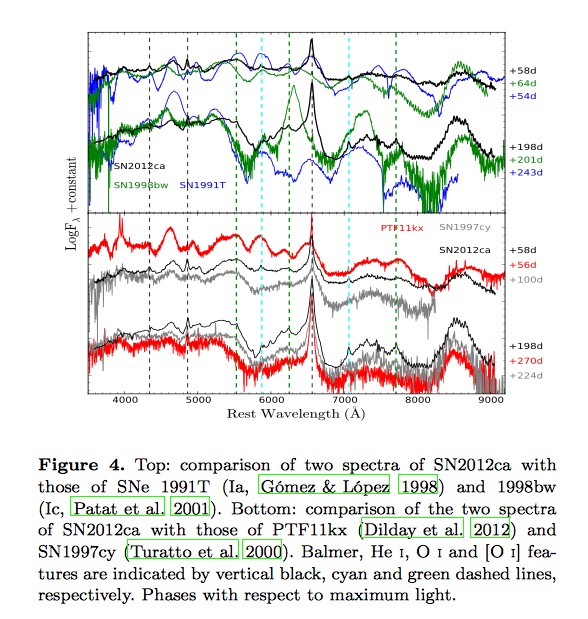Padova-Asiago Supernova Group
Highlights
SN2012ca: a stripped envelope core-collapse SN interacting with dense circumstellar medium
Inserra, C. etal. 2014, MNRAS 437, L51 (link to pdf)
We report optical and near-infrared observations of SN2012ca with the Public ESO Spectroscopy Survey of Transient Objects (PESSTO), spread over one year since discovery. The supernova (SN) bears many similarities to SN1997cy and to other events classified as Type IIn but which have been suggested to have a thermonuclear origin with narrow hydrogen lines produced when the ejecta impact a hydrogen-rich circumstellar medium (CSM). Our analysis, especially in the nebular phase, reveals the presence of oxygen, magnesium and carbon features. This suggests a core-collapse explanation for SN2012ca, in contrast to the thermonuclear interpretation proposed for some members of this group. We suggest that the data can be explained with a hydrogen- and helium-deficient SN ejecta (Type I) interacting with a hydrogen-rich CSM, but that the explosion was more likely a Type Ic core-collapse explosion than a Type Ia thermonuclear one. This suggests that two channels (both thermonuclear and stripped envelope core-collapse) may be responsible for these SN 1997cy-like events. 5
